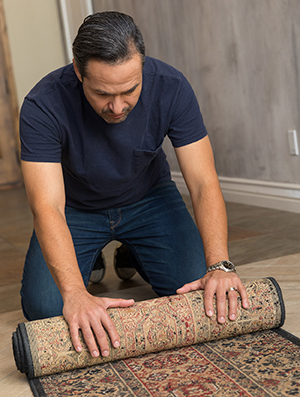As Parkinson disease progresses, home safety will be an increasing concern. This page includes tips that can help make your daily life safer and easier. Your healthcare provider may also recommend a therapist to advise you on the best ways to set up your home.
Setting up living spaces
Get help from family and friends to make these changes:
-
Keep walkways open and free of clutter.
-
Move phone and electrical cords out of the way.
-
Remove throw rugs to prevent trips.
-
Have floors that are nonskid. Avoid floors with too many patterns.
-
Get a cellphone, cordless phone, or speakerphone. Program in the numbers for family and emergency services.
-
Make sure all furniture is sturdy.
-
Use chairs that have armrests and that don't swivel. Choose chair heights that make standing easier.
-
Wear well-fitting, nonslip shoes.
-
Make sure rooms are well-lit. Install nightlights along walkways. Adjust blinds and shades to reduce glare.
-
Think about placing lines of tape on the floor between rooms. Stepping over the tape may prompt you to keep moving, if freezing at doorways is a problem.
-
Put smoke alarms in all rooms, including the bathroom and kitchen.
Setting up the bathroom
Use the tips below to make changes to your bathroom. Medicare or insurance may help cover the costs of some of these items, depending on your needs and plan.
-
Have grab bars put in the shower or tub for support getting in and out.
-
Install a handheld showerhead for easier bathing.
-
Raise the height of the toilet with a commode chair or elevated toilet seat.
-
Use a rubber-backed bathmat to help prevent slips and falls.
-
Buy a shower chair with a back to make showering safer and less tiring.
Preventing falls
Parkinson symptoms make falls more likely. Safety improvements around the house can help. But if you start having frequent falls, talk to your healthcare provider. They may advise physical therapy. This helps you learn the safest ways to move around. If needed, your therapist may also teach you how to use a cane or walker. Consider buying a lifeline. Then if you do fall while you're alone, you'll have a way to get help.


